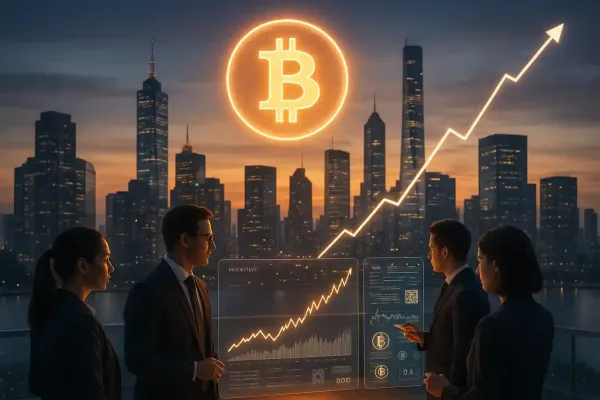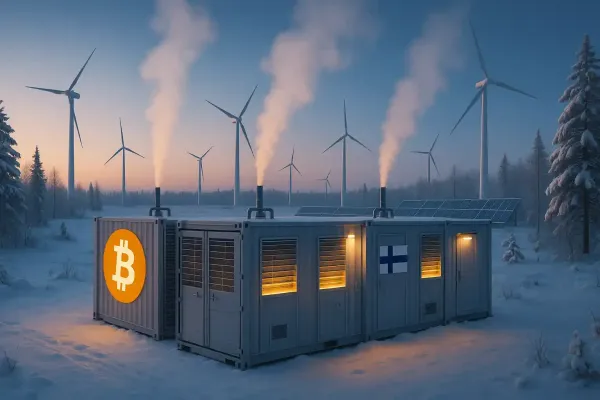The Economics of Bitcoin Mining: Balancing Costs, Rewards, and Sustainability

Bitcoin mining is at the heart of the cryptocurrency ecosystem, enabling transactions to be verified and the network to remain secure. However, the economics of Bitcoin mining—balancing operational costs, potential rewards, and sustainability—presents a complex and evolving landscape. This article delves deeply into the financial, technical, and environmental aspects of Bitcoin mining to understand its viability and future prospects in an increasingly competitive market.
The Cost of Bitcoin Mining
Bitcoin mining involves solving complex cryptographic problems to validate transactions and create new bitcoins. This process requires significant computational power, which translates into substantial costs. Key components of these costs include:
1. Electricity Costs
Electricity is the largest operational expense for miners. The energy-intensive Proof-of-Work (PoW) mechanism demands continuous operation of high-powered mining rigs, consuming vast amounts of electricity. The cost of electricity varies globally, making location a critical factor for profitability. Miners in regions with access to cheap and abundant electricity, such as areas with surplus renewable energy, often have a significant competitive advantage.
2. Hardware Investment
Miners need specialized hardware, such as Application-Specific Integrated Circuits (ASICs), which are optimized for Bitcoin mining. These machines are expensive, and their efficiency decreases over time as technology advances, requiring regular upgrades to remain competitive. Additionally, the initial capital investment in setting up a mining operation can be prohibitively high, especially for small-scale miners.
3. Cooling and Maintenance
Mining hardware generates significant heat, necessitating cooling systems to prevent equipment damage. Efficient cooling not only protects the hardware but also ensures consistent performance. Additionally, ongoing maintenance is essential to ensure the hardware operates at optimal performance. This includes repairing or replacing components and optimizing setups to maximize efficiency.
The Rewards of Bitcoin Mining
The primary incentive for miners is the block reward, which consists of:
1. Block Subsidy
Miners receive a fixed number of bitcoins for successfully mining a block. This reward halves approximately every four years in an event known as the Bitcoin halving. As of 2025, the block reward is 3.125 BTC per block. Over time, this decreasing block subsidy places more pressure on miners to maximize efficiency and seek alternative revenue sources.
2. Transaction Fees
In addition to the block subsidy, miners earn transaction fees included in the block. These fees are paid by users who prioritize their transactions for faster confirmation. As the block subsidy diminishes over time, transaction fees are expected to become a more significant part of miners’ revenue. In the future, these fees could play a central role in sustaining the Bitcoin network.
Balancing Costs and Rewards
For miners, profitability hinges on achieving a balance between operational costs and rewards. Several strategies can optimize this balance:
1. Location Selection
Miners often set up operations in regions with low electricity costs and favorable climates for cooling. Countries like Iceland and Canada, with abundant renewable energy sources and naturally cool temperatures, are popular choices. Strategic location planning can significantly reduce operational expenses.
2. Energy Efficiency
Investing in energy-efficient mining equipment and employing advanced cooling techniques can reduce electricity consumption, improving profitability. Innovative solutions, such as immersion cooling and recycling waste heat for other purposes, are increasingly being adopted by forward-thinking mining operations.
3. Mining Pool Participation
Joining a mining pool allows individual miners to combine their computational power with others, sharing the rewards proportionally. This approach reduces income volatility compared to solo mining, making it a more stable option for small and medium-sized miners.
4. Dynamic Scaling
Some miners adjust their operations based on market conditions. For example, they may scale back during periods of low Bitcoin prices or high energy costs and ramp up during more favorable conditions. This flexibility helps mitigate financial risks.
Sustainability Challenges and Solutions
Bitcoin mining’s energy consumption has drawn significant criticism for its environmental impact. However, efforts are underway to address these concerns and make mining more sustainable:
1. Transition to Renewable Energy
Many miners are shifting to renewable energy sources, such as hydropower, solar, and wind, to reduce their carbon footprint. Countries with abundant renewable energy resources are becoming hubs for eco-friendly mining operations. For instance, Iceland and Norway utilize geothermal and hydropower for Bitcoin mining, setting examples for sustainable practices.
2. Technological Advancements
Developing more efficient ASICs and implementing techniques like immersion cooling can lower energy requirements and environmental impact. Research into alternative cooling methods and recycling waste heat is also gaining traction, offering additional avenues for sustainability.
3. Geographic Redistribution
Encouraging miners to operate in regions with surplus renewable energy can mitigate the environmental effects of concentrated mining hubs. Geographic redistribution also reduces the risks associated with centralization, promoting a more decentralized and resilient network.
4. Policy and Incentives
Governments and organizations can introduce incentives for miners to adopt green energy solutions, such as tax benefits, subsidies for renewable energy use, or penalties for carbon-intensive operations. Regulatory frameworks that support sustainable mining practices could drive industry-wide change.
5. Exploring Alternative Consensus Mechanisms
Although Bitcoin is unlikely to abandon PoW, the exploration of hybrid models or complementary solutions could help reduce energy consumption. Lessons from other cryptocurrencies adopting less energy-intensive models, such as Proof-of-Stake (PoS), might inspire innovations in Bitcoin’s ecosystem.
The Future of Bitcoin Mining Economics
As the Bitcoin network matures, mining economics will continue to evolve. The diminishing block subsidy will make transaction fees increasingly important for miner revenue. Moreover, advancements in renewable energy and energy-efficient technologies will shape the industry’s sustainability efforts. Collaborative initiatives between miners, energy providers, and policymakers will be crucial in addressing environmental and economic challenges.
The Bitcoin mining industry’s ability to adapt to changing conditions—whether through technological innovation, strategic planning, or sustainability measures—will determine its long-term viability. Miners who embrace these changes and prioritize efficiency and sustainability will be better positioned to thrive in the evolving landscape.
Conclusion
The economics of Bitcoin mining involves navigating a complex interplay of costs, rewards, and sustainability challenges. While profitability depends on multiple factors, the industry’s shift toward renewable energy and technological innovation offers hope for a more sustainable future.
For miners and the cryptocurrency ecosystem as a whole, balancing these elements is not just a financial imperative but a step toward ensuring the long-term viability of Bitcoin. As Bitcoin continues to grow, sustainable mining practices will play a pivotal role in maintaining the integrity and resilience of the network.
This article presented by Loka Mining.
Loka is revolutionizing the Bitcoin mining ecosystem by directly connecting investors with Bitcoin miners through a decentralized mining pool and an upcoming permissionless forward hashrate marketplace protocol.
Loka enables investors to get Bitcoin at lower than market price without centralized & counter-party risks, and Bitcoin miners to access capital efficient financing and hedge their risk exposure by selling their future mining rewards.
Find out more about loka in https://lokamining.com — or access our mining pool aggregator on https://pool.lokamining.com





